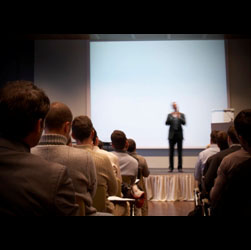
Making the Case for Sustainability
- By Mark Buckley
- Aug 01, 2011
Communicating the benefits of a business solution to various stakeholders requires wearing multiple hats and re-focusing the conversation to the elements that are important to the individual. Facility managers are increasingly charged with new responsibilities, including creating sustainability programs that have positive effects on the environment, the health of building occupants and the bottom line. In addition to maintaining their facilities, facility managers must understand procurement issues, budgetary concerns and the well-being of staff, tenants and visitors.
When a facility manager makes the case for sustainability, they need to articulate the goals of the program. Sustainable practices should meet business needs in a cost-effective way and should be environmentally preferable and safe for human exposure. Facility managers can also work to create purchasing efficiencies that can lower cost and reduce waste from consumables or pursue LEED certification for a building.
Whatever the sustainable idea, facility managers need to be well-versed in the overall value and benefits for individual departments. When dealing with stakeholders, facility managers need to ask themselves a few questions and be prepared for rebuttals.
How easily can we get what we need?When a facility manager wants to switch from a traditional cleaning product to sustainable cleaning products, a procurement manager may ask about the complete product line, effectiveness, ease of procurement and cost. To get the procurement manager on board, the facility manager will need to embrace the procurement language.
To ensure consistency in our organization, we can work together to identify the preferred supplier who can help control costs. By evaluating the life cycle cost of each product, we can streamline our ordering processes and consolidate under one vendor who can provide environmentally preferable products with easy, online ordering. This line of communication addresses the important issues for the procurement manager while offering an overall business strategy that will help the organization to meet both its sustainability and business goals.
Okay, but what will it cost?Additionally, facility managers are becoming increasingly responsible for not only maintaining budgets, but finding creative ways to cut costs. This is a challenge, especially when they are required to do more with less, but the challenge can be met by knowing how to talk the finance talk: Over time, the long-term benefits of creating a more sustainable facility outweigh the upfront investment and reduce other, more harmful risks to the organization. For instance, with sustainable cleaning products, we can accomplish the same tasks without negative health and environmental influences on workers and building tenants. Plus, sustainable products are more highly concentrated and versatile, and have multiple uses thereby reducing the need for duplicate products. There is less to dispose of – which adds up to more savings.
Again, here, the long term savings, through using more concentrated and effective products will help facility managers make their case with the finance department.
What’s in it for our employees?One of the primary roles of a facility manager is to manage internal building staff and ensure they are working under safe and hygienic conditions. This responsibility also extends to all building occupants and visitors. Sustainability programs that include environmentally preferable cleaning products benefit the health of everyone under the roof. To add the human element while making the case for sustainability, the facility manager should engage the human resources manager. They will not only support a sustainability program and its affects on employees, but can help to communicate the overall benefits to the staff.
When communicating with human resources professionals, facility managers need to tailor the conversation for HR.
Using environmentally preferable, effective and safe cleaning products will not only keep our staff healthier and safer, but could actually boost morale since employees take pride working for a company that is environmentally conscious. Additionally, using these products can minimize the potential for accidents and exposure to chemicals of concern for all of our employees.These three different approaches all have the same overall goal – facility managers can influence change. The evolving role of the facility manager requires creative thinking to achieve overall objectives. According to the International Facility Management Association (IFMA), 85 percent of facility managers manage multiple facilities. Even if only a small percentage of these facility managers made the switch to certified sustainable cleaning products, the impact would be phenomenal. IFMA members alone have a combined annual purchasing power of $100 billion – demonstrating they are empowered to make this kind of important decision for their organization.
Facility managers already have their hands in many building functions that could benefit from sustainability programs, so it’s natural that they become targets for developing effective sustainability programs. As key influencers, it is important to remember that facility managers can provide sound recommendations and discuss sustainability benefits within all areas of the organization.
About the Author
As Vice President of Environmental Affairs at Staples, Inc., Mark Buckley directs Staples’ global environmental commitment and sustainable business practices.